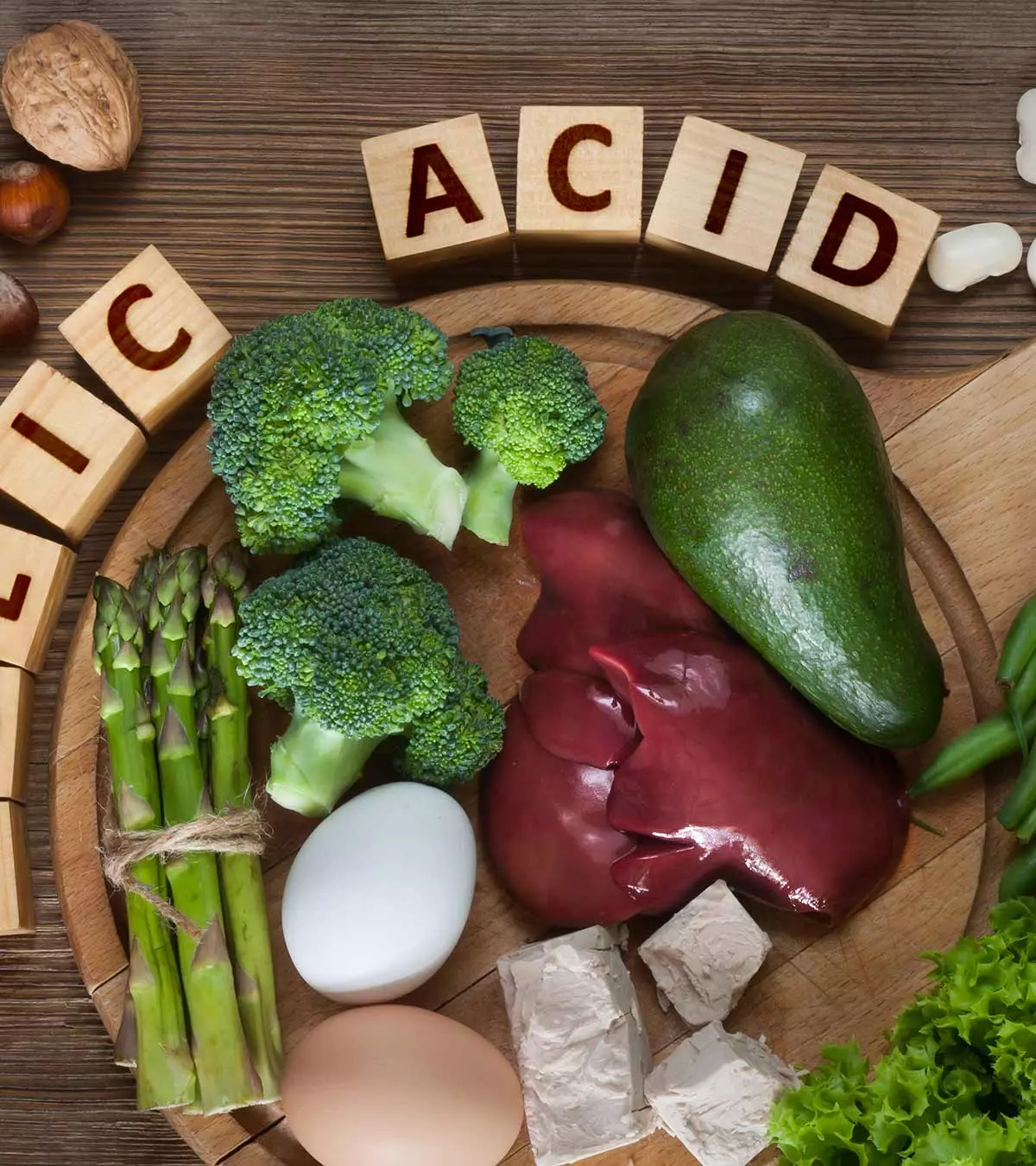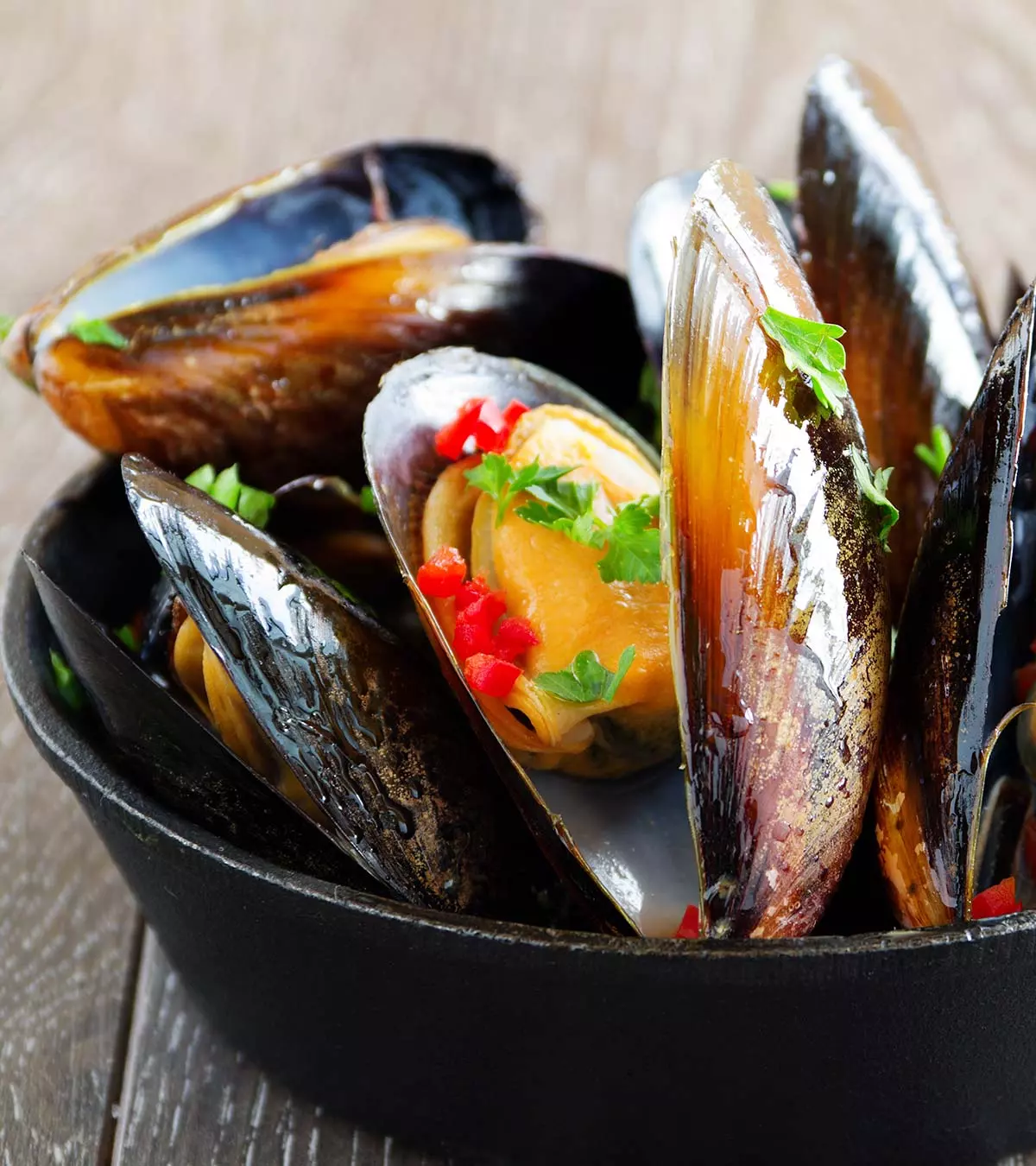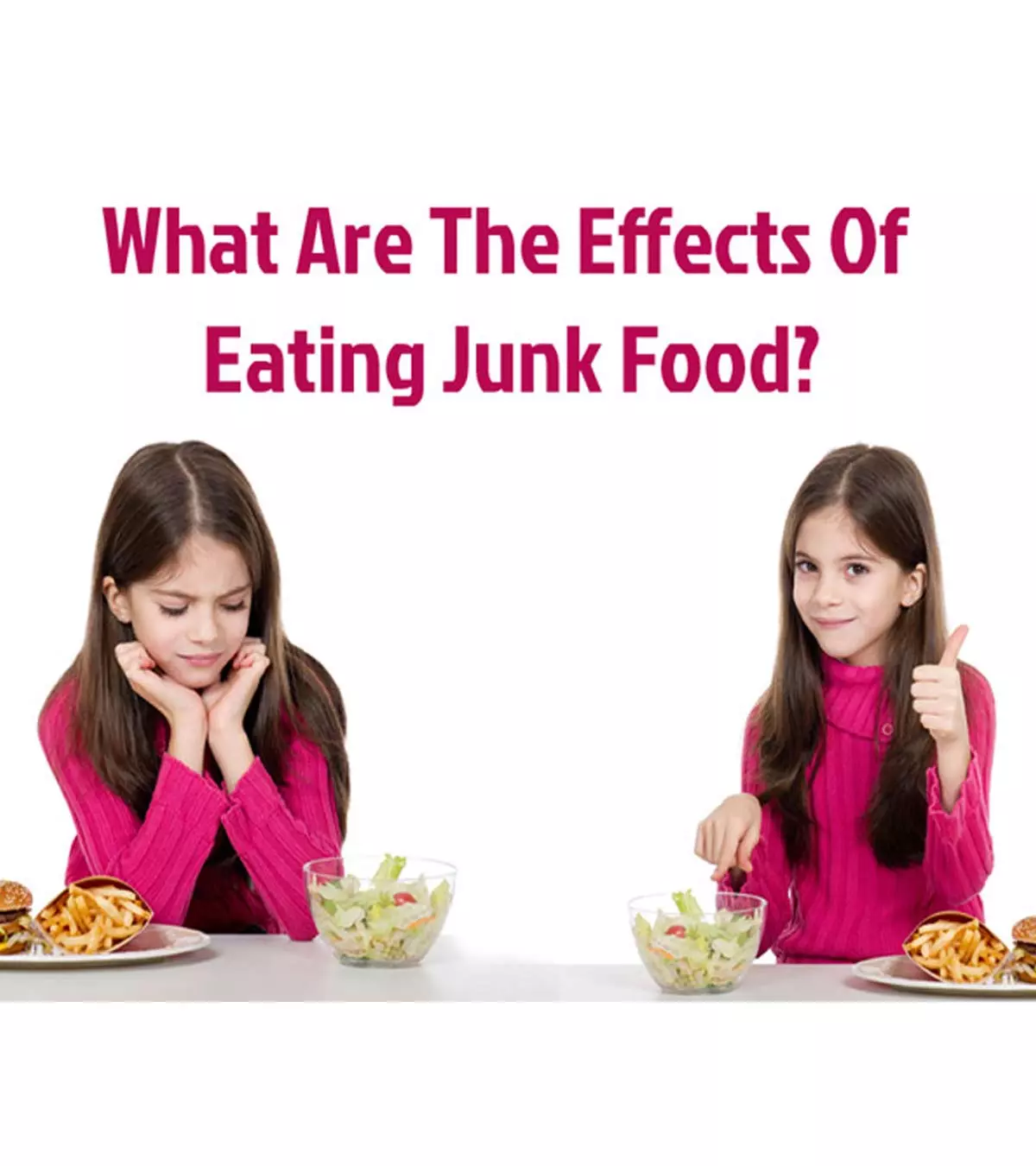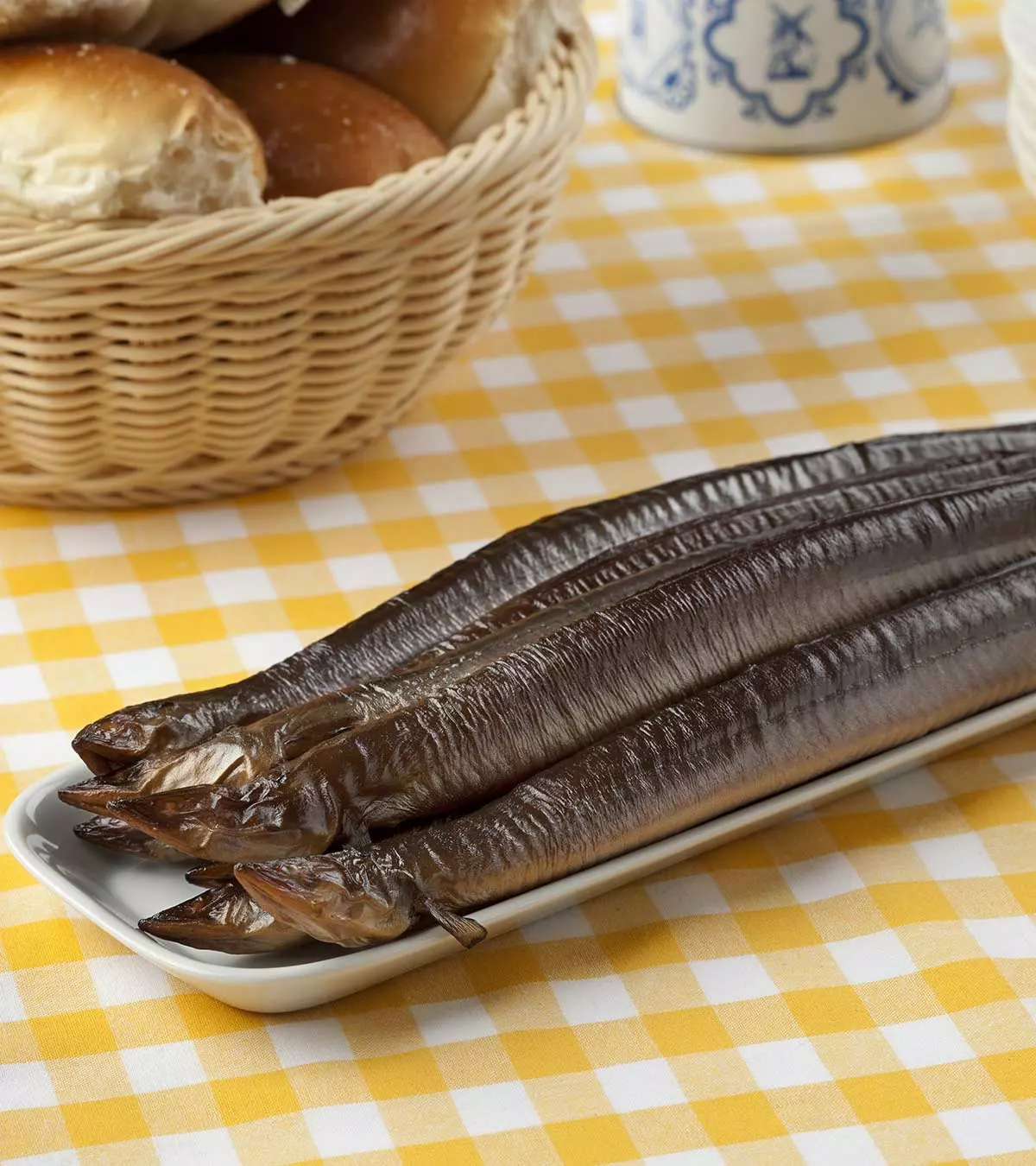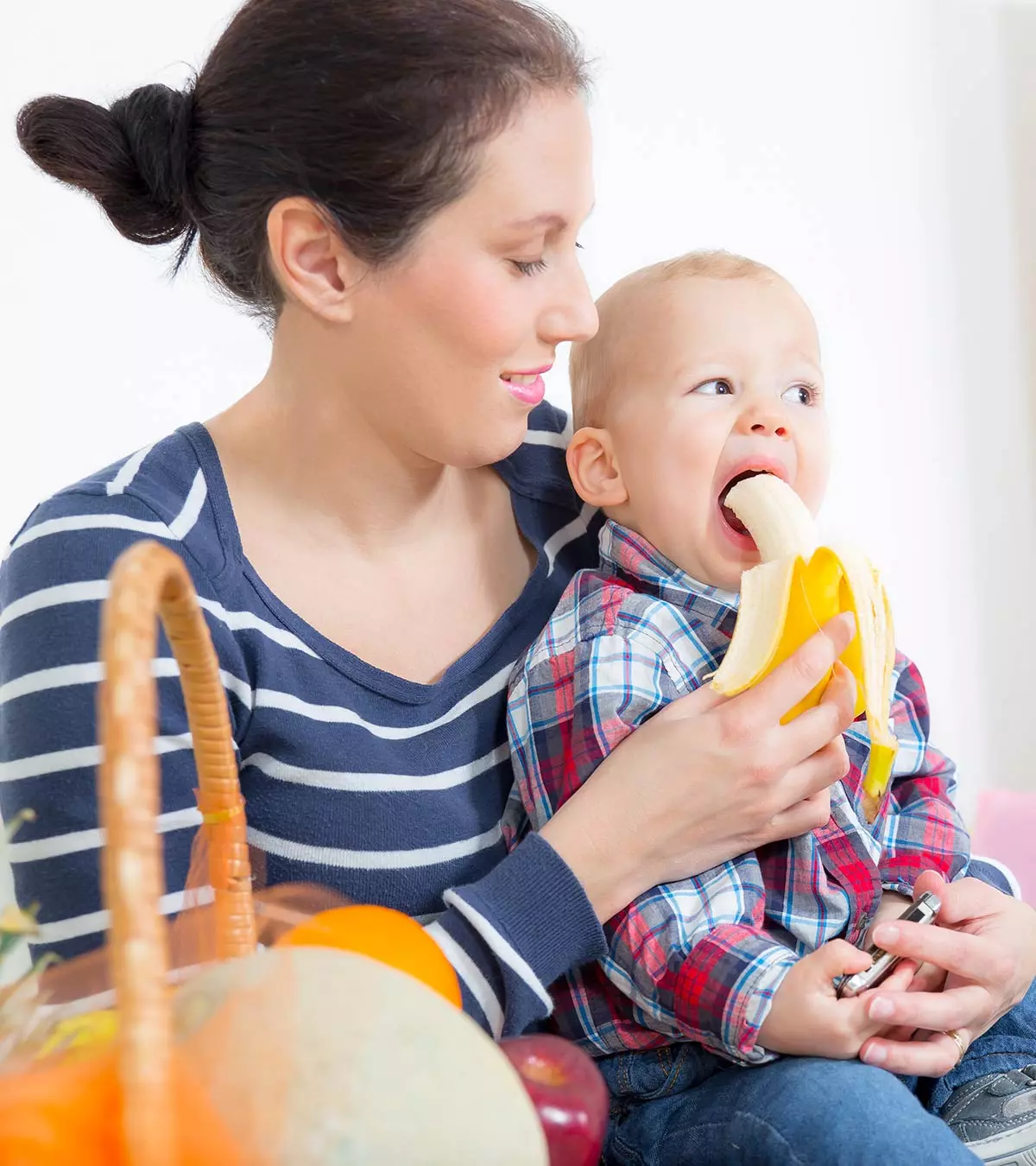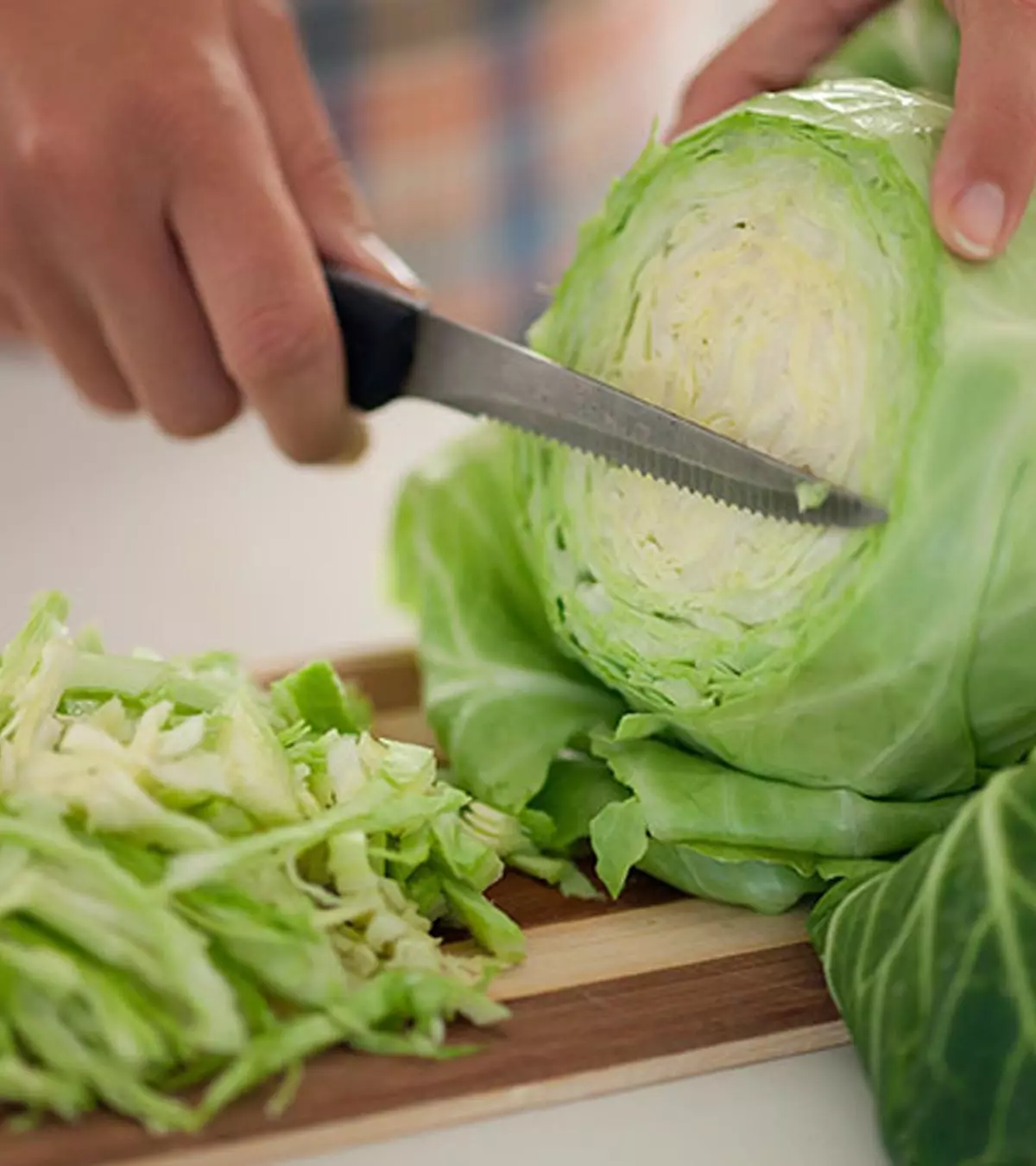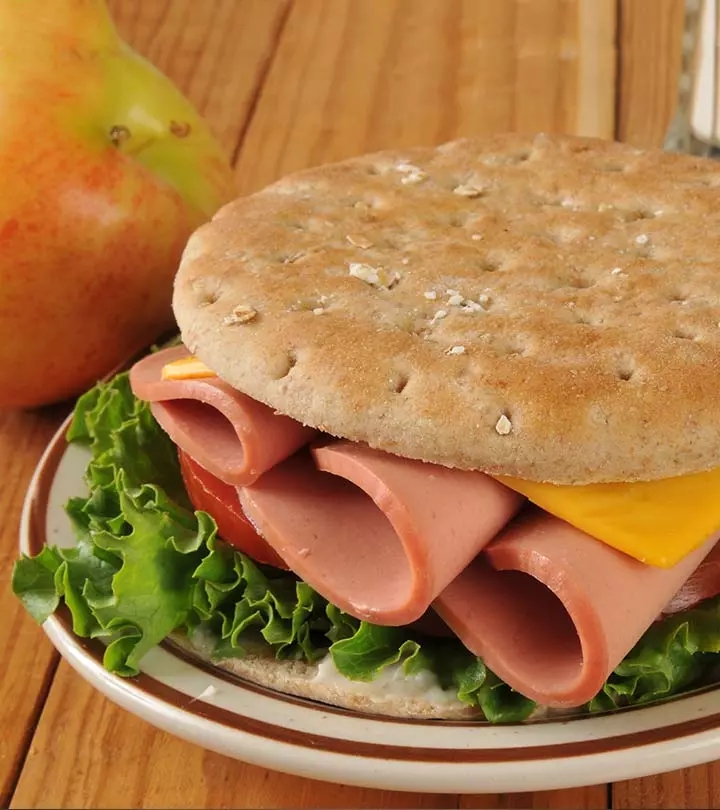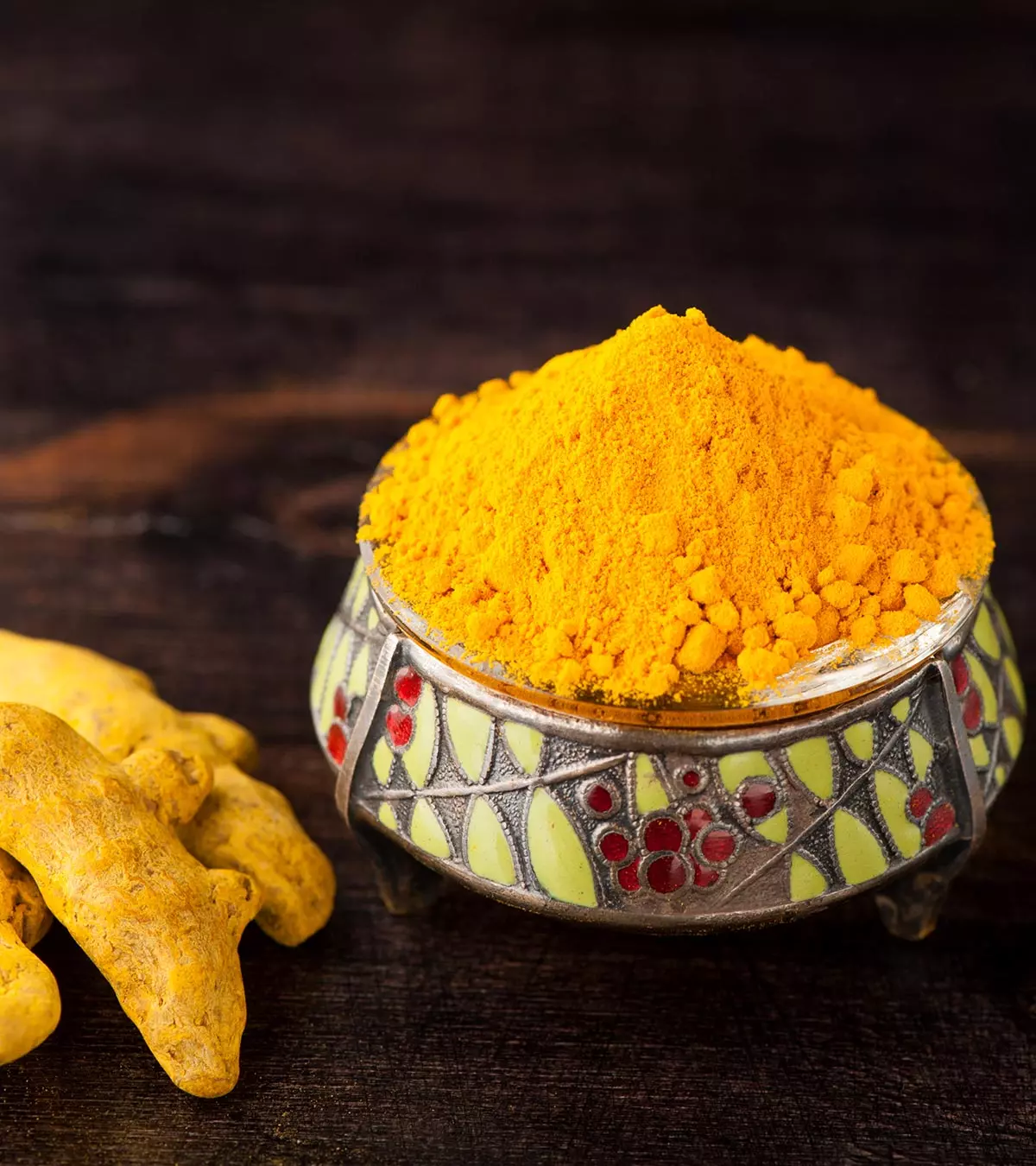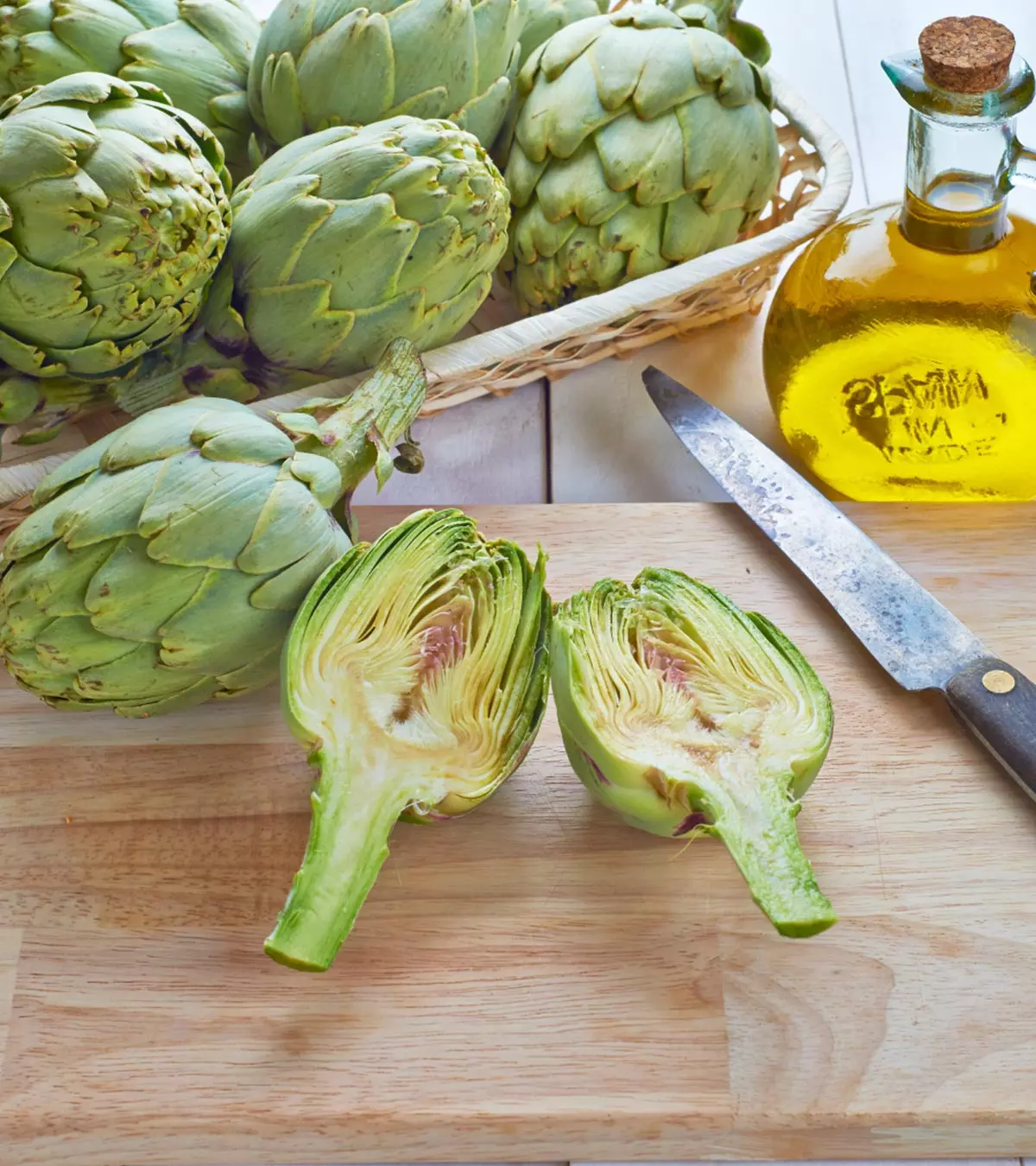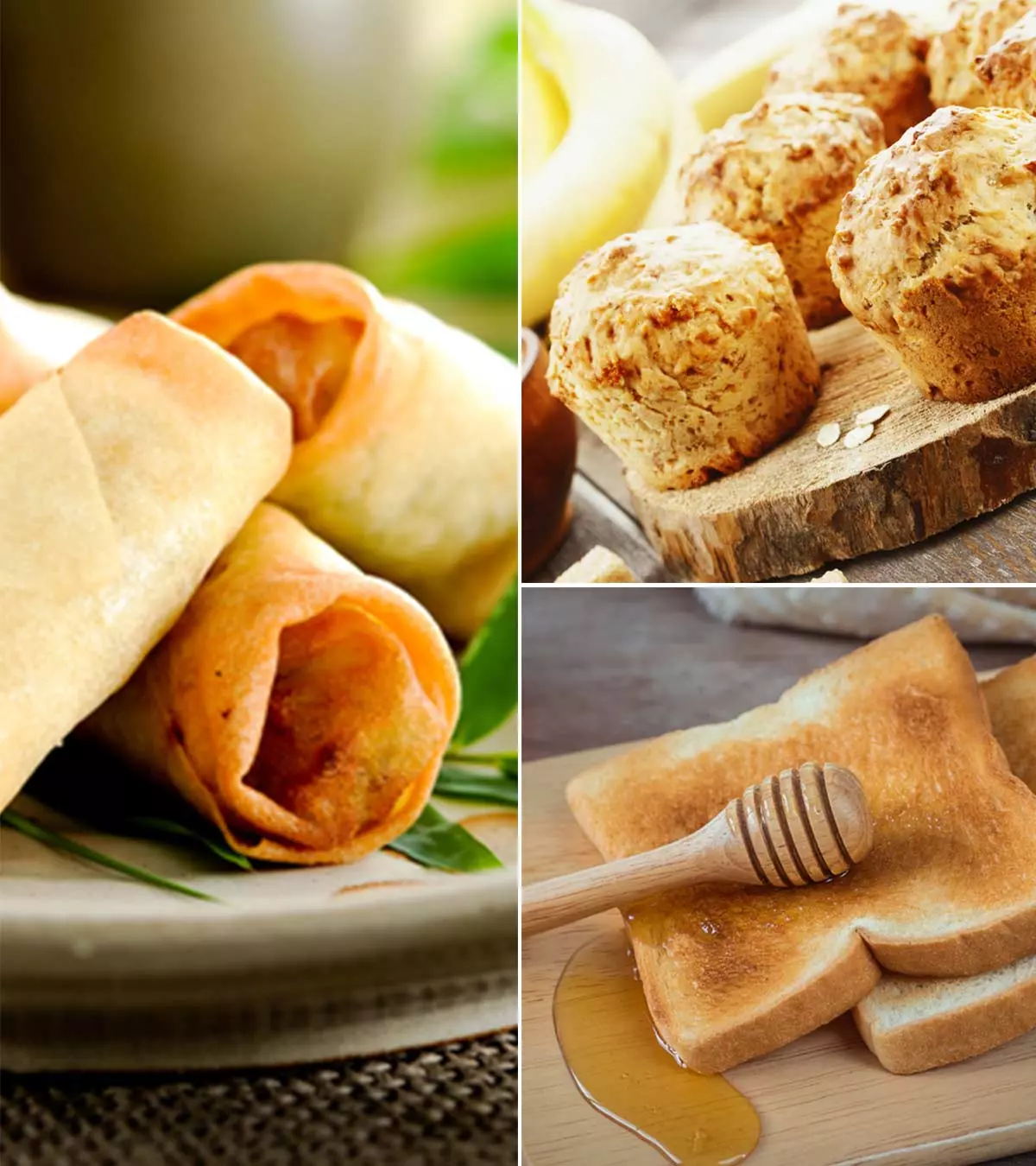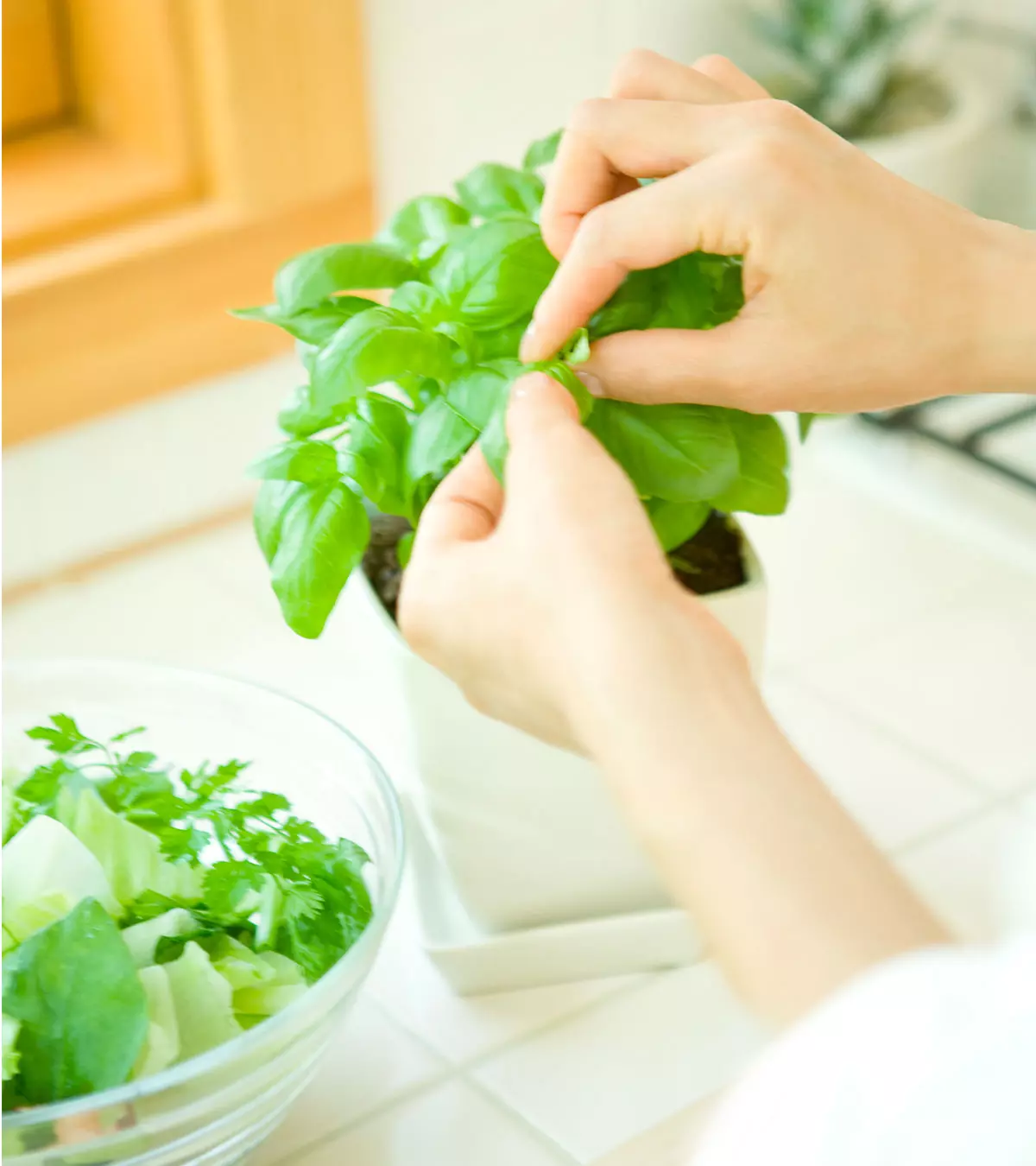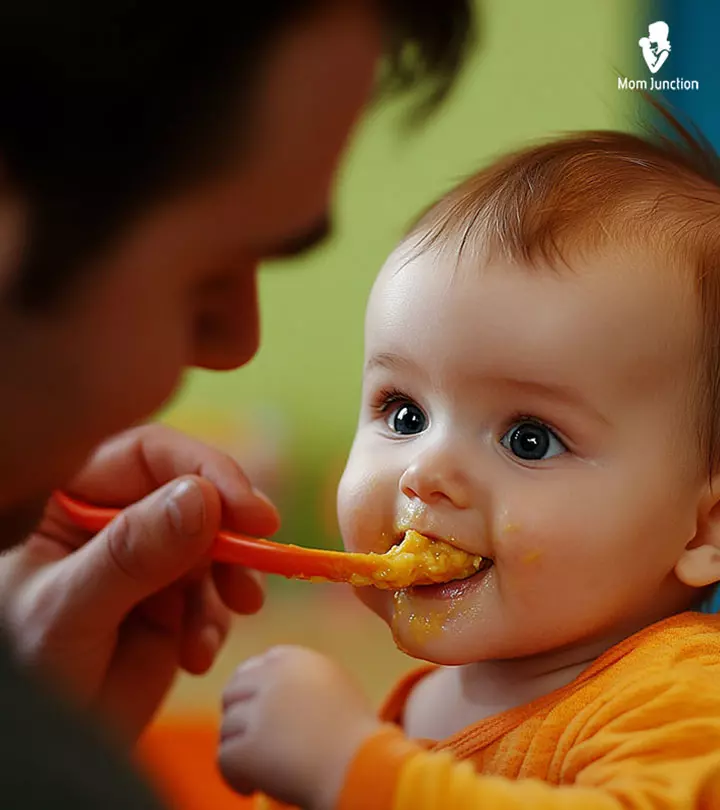
Image: Midjourney/ MomJunction Design Team
If your child gets tired easily or falls sick too often, it may indicate they are receiving inadequate nutrition. To help you keep track of their nutrition and provide them with the required nutrients in the right amounts, you could use a balanced diet chart for toddlers or a food pyramid (a nutrition tool). A balanced diet should include foods from all the major food groups, including proteins, dairy, fruits, vegetables, and grains. Therefore, knowing your toddler’s nutritional requirements can help ensure their proper growth and development. A global United Nations International Children’s Emergency Fund (UNICEF) report highlights that about one in two children aged below five experiences hidden hunger caused by deficiencies in vitamins and essential nutrients. Therefore, parents must provide adequate and appropriate amounts of each food type to help children stay healthy and active. Read on to learn about following a balanced diet for toddlers, what nutrients are required for it, and its benefits.

Key Pointers
- The health of a toddler is directly dependent on their food habits, which is why a balanced diet is paramount for them.
- A nutritious diet consisting of proteins, carbohydrates, fats, essential vitamins, and minerals should be provided to toddlers.
- Foods that should be included in a toddler’s diet include whole grains, dairy, fruits, vegetables, lean proteins, and healthy fats.
- A properly balanced diet, including a variety of healthy foods, should be planned to maintain a toddler’s health and positively influence their future dietary habits.
What Is A Balanced Diet For A Toddler?
A balanced diet is highly beneficial for the health and well-being of your toddlers. A balanced diet consists of proteins, minerals, vitamins, and carbohydrates in adequate amounts, and it meets the daily caloric needs of your toddler. Your toddler needs around 50% of calorie requirements from carbohydrates, 30% from fats, and 20% from proteins. As a parent, you need to ensure that your little one eats food from all the food groups that one cannot obtain from consuming unhealthy finger foods of a single type.
Rachel Rothman, a registered dietitian, explains that calorie needs can vary among toddlers based on their growth and activity levels. She says, “I’m asked a lot about the calorie needs for a one-year-old. I am always hesitant to provide hard recommendations, I truly feel it’s important to let a child lead and assess their hunger and satiety cues. That being said, a one-year-old needs roughly 1000 calories per day (i).”
 Did you know?
Did you know?Nutrients To Include In A Balanced Diet
Here, we list the major nutrients to include in the toddler’s balanced diet.
1. Carbohydrates
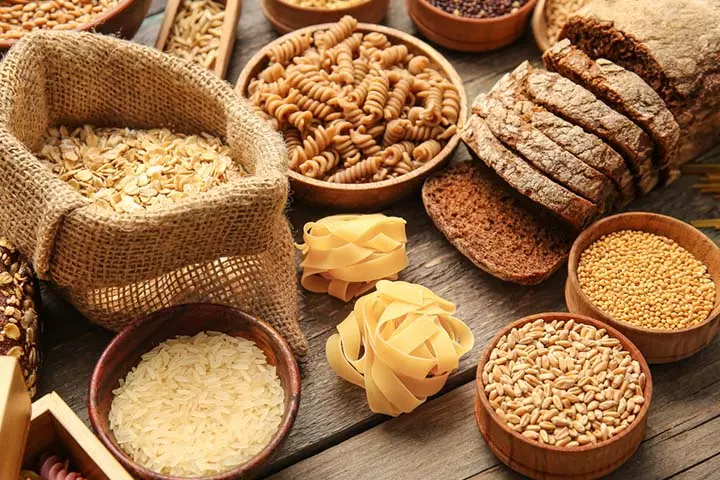
Toddlers need the right amounts of carbohydrates for enough energy. Including whole grain foods like bread, cereals, and pasta, in your toddler’s so that they get their daily dose of carbohydrates (1).
2. Proteins
Proteins are the quintessential nutrient for growth, muscle building and repair, and building antibodies. Include foods like fatty fish, dairy products, and eggs in your toddler’s diet.
 Quick fact
Quick fact3. Calcium

Calcium is extremely necessary for strong bones. Include calcium-rich foods, such as cheese, yogurt, cauliflower, broccoli, spinach, and collard green, in your toddler’s regular diet. Adding these calcium-rich foods will prevent the development of calcium deficiency in your toddlers (2).
4. Vitamins
Vitamins are quite necessary for the normal functioning of the body. In addition, vitamins are essential nutrient requirements that assist in overall child development, including boosting the immune system, promoting growth and development, and aiding the functioning of the cells and various organs. Vitamin A is necessary for good vision. Vitamin C acts as an immune booster and supports brain functioning. Vitamin D is necessary for effective calcium absorption. So include various vitamin-rich foods in your toddler’s diet to help him have good health (3).
5. Other nutrients

Besides carbohydrates, calcium, proteins, and vitamins, your toddler needs the appropriate amounts of iron, amino acids, and omega-3 and omega-6 fatty acids to be healthy. Oily fish such as salmon, nuts, seeds, and poultry are some iron-rich foods for toddlers that can provide your toddler with high-quality protein and omega fatty acids (4). The National Institutes of Health (NIH) advises that iron-fortified foods are essential for children aged one to four, as their bodies quickly use iron for growth. A lack of these foods may lead to iron deficiency (4).
 Point to consider
Point to considerBalanced Diet Chart For Toddlers
The World Health Organization (WHO) recommends introducing a diverse range of foods for children between six months and two years, including breastmilk, grains, legumes, dairy, eggs, meat, fruits, and vegetables (12). Here is a diet chart that displays essential foods for toddlers with the right serving size and amount of daily servings. Parents need to choose one or two foods from each food group for their toddlers (8) (11).
| Food Group | Foods Example | Serving Size | Daily Serve |
|---|---|---|---|
| Grains | Rice Pasta, Bread, Cereal Rolls, Wheat Crackers, Noodles | 1 cup ½ – 1 cup1 or 2 slices½ – 1 cup½ – 1 roll1½ cup | Four servings for toddlers |
| Fruits | Berries, Apricots, Dates, Oranges, Peaches, Grapes, Mangoes, Pineapples, Bananas, Melons | A quarter cup of dried fruits, 6-ounce fruit juice, ½ a cup of frozen raw fruits | Two servings for toddlers |
| Vegetables | Cooked veggies, Cauliflower (Medium), Potato, Carrot (sliced), Spinach, Broccoli, Tomato Salad | Half a cup of cooked vegetables and one cup of raw, leafy vegetables | Two servings for toddlers |
| Lean Proteins | Fish Eggs, Dried beans, Lentils, Peas, Peanut butter | 1 medium filet Cooked beans: ¾ cup, Cooked lentils: ¾ cup, Cooked peas: ¾ cup 1 tablespoon | Half serving for toddlers |
| Dairy Products | Milk Cheese, Yogurt, Custard | 250ml 40gms, 200gms, 250ml | One serving for toddlers |
| Fats and Oils | Low-fat mayonnaise, Soft margarine, Light salad dressing, Vegetable oils | 1 tablespoon | One serving for toddlers |
 Experts say
Experts say Experts say
Experts sayHandling Picky Eaters
As you continue introducing new foods to your toddler, it is normal for them to develop food preferences and be picky eaters. The American Academy of Pediatrics (AAP) remarks that picky eating behaviors begin between 18 months and two years, as toddlers commonly start refusing new foods during this stage (13). Here are some tips and strategies to handle your picky eaters and help establish good and healthy food habits that can last a lifetime (5).
- Offer them a variety of foods with different textures, colors, and flavors.
- Make their meals visually appealing.
- Offer small portions.
- Be a good role model.
- Involve them in food preparation.
- Be patient and keep trying; do not force.
- Do not use any food as a reward or punishment.
 Point to ponder
Point to ponderFrequently Asked Questions
1. What do two-year-olds eat for breakfast?
Below is a sample breakfast menu prepared by the AAP, which you can use to prepare your toddler’s breakfast (6).
- ½ cup nonfat or low-fat milk
- ½ slice whole-wheat toast
- ½ cup iron-fortified cereal or one egg
- ½ teaspoon margarine or butter or one teaspoon jelly
- 1⁄3 cup fruit (for example, banana, cantaloupe, or strawberries)
2. What should a two-year-old eat for lunch?
A sample lunch menu for a two-year-old, according to the AAP, is as follows (6):
- ½ cup low-fat or nonfat milk
- 2–3 carrot sticks (cut up) or two tablespoons of other dark-yellow or dark-green vegetables
- ½ sandwich—one slice of whole-wheat bread, one ounce of meat, a slice of cheese, a veggie (avocado, lettuce, or tomato)
- ½ cup of berries or one small (½ ounce) low-fat oatmeal cookie
3. How many meals should a toddler eat daily?
A two-year-old toddler can have around three to four meals a day with an addition of around two snacks in between the meals (7).
4. What are some healthy snack options for toddlers?
Fresh fruits, vegetable sticks, popcorn, rice crackers, homemade biscuits and cookies, yogurt with dried fruits, boiled eggs, smoothies, and low-sugar or homemade granola and energy bars are some healthy snacks for toddlers.
5. How can I keep my toddler interested in meals?
Make your toddler’s plate colorful by adding various new foods alongside their favorite meals, and let them eat with you to encourage healthy eating (14). Set up a designated eating area to better manage your child’s eating habits and portion sizes. Furthermore, avoiding screen time during meals may prevent distractions and overeating (15).
6. How to keep mealtime safe for my toddler?
Do not serve hard foods like whole nuts, grapes, and raw carrots. Instead, chop or cut these foods into small pieces to reduce the risk of choking. Make sure your child is appropriately seated at the table, and always supervise them while they eat. Discourage quick movements like walking or running during meals to ensure safety (16).
A balanced diet, including balanced meals, nutritious drinks, and healthy snacks for toddlers helps promote growth and development by providing optimum nutrition. Therefore, it is important to follow the dietary guidelines and incorporate different foods into their diet. Provide toddlers with optimum carbohydrates for energy, proteins for growth and repair, calcium for strong bones, vitamins for good immunity, and various other nutrients for overall well-being. If you are not sure of the right foods and their ideal quantity, refer to the balanced diet chart for toddlers. Make sure to offer a variety of healthy snacks in different forms and flavors to keep toddlers interested and prevent fussy eating behaviors. Consult a pediatrician if you are further doubtful of your child’s nutrition.
Infographic: Ways To Make Toddlers Eat A Healthy And Balanced Diet
When babies become toddlers, they develop new eating skills and food habits. Often, they become erratic eaters, making it difficult for parents to make them consume a balanced diet. But they can be made to eat better. Scroll through this infographic to find tips to ensure your toddlers get a nutritious and balanced diet. Illustration: Momjunction Design Team
Illustration: Balanced Diet Chart For Toddlers – A Complete Guide
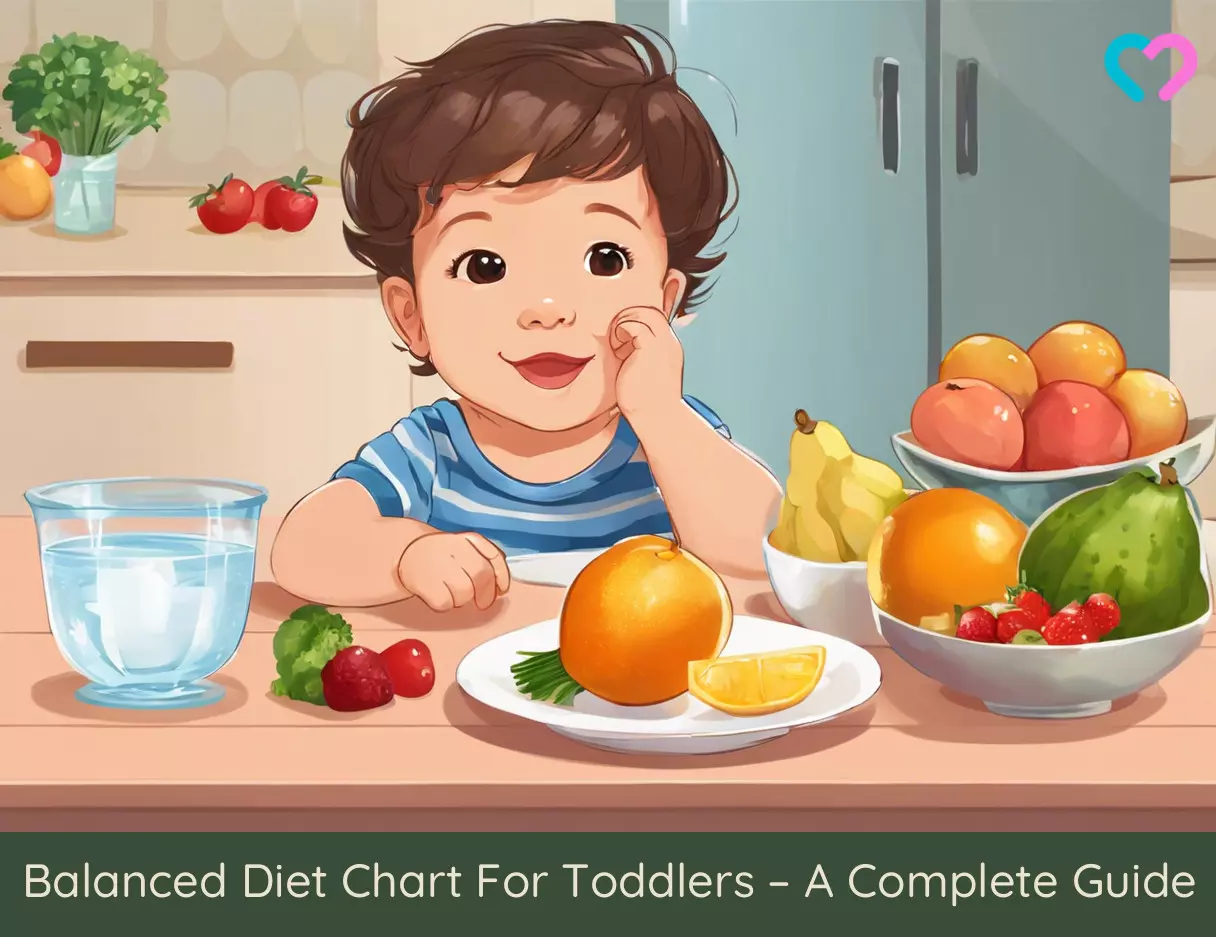
Image: Stable Diffusion/MomJunction Design Team
Personal Experience: Sources
MomJunction articles include first-hand experiences to provide you with better insights through real-life narratives. Here are the sources of personal accounts referenced in this article.
i. Food for a one year old: your baby is one, now how do you feed?;https://nutritioninbloom.com/blog/food-for-a-one-year-old-your-baby-is-on-now-how-do-you-feed
References
- Carbohydrates.
https://medlineplus.gov/ency/article/002469.htm - Calcium supplements.
https://medlineplus.gov/ency/article/007477.htm - Vitamins.
https://medlineplus.gov/ency/article/002399.htm - Iron in diet.
https://medlineplus.gov/ency/article/002422.htm - 7 Tips For Winning Over A Picky Eater.
https://www.unicef.org/parenting/food-nutrition/7-tips-winning-over-picky-eater - Sample Menu for a Two-Year-Old
https://www.healthychildren.org/English/ages-stages/toddler/nutrition/Pages/Sample-One-Day-Menu-for-a-Two-Year-Old.aspx - Feeding your baby: 1–2 years
https://www.unicef.org/parenting/food-nutrition/feeding-your-baby-1-2-years - Serving Sizes for Toddlers.
https://www.healthychildren.org/English/ages-stages/toddler/nutrition/Pages/Serving-Sizes-for-Toddlers.aspx - How much protein does my child need?
https://health.choc.org/how-much-protein-does-my-child-need/ - Iron-Deficiency Anemia Related to Milk Consumption.
https://www.nationwidechildrens.org/-/media/nch/for-medical-professionals/practice-tools-new/iron-deficiency-anemia-related-to-milk-consumption.ashx - Dietary guidelines in pictures: children 1-2 years.
https://raisingchildren.net.au/toddlers/nutrition-fitness/daily-food-guides/dietary-guide-1-2-years - Infant and young child feeding.
https://www.who.int/data/nutrition/nlis/info/infant-and-young-child-feeding - How do I help my picky eater try more healthy foods?
https://www.healthychildren.org/English/tips-tools/ask-the-pediatrician/Pages/How-Do-I-Help-My-Picky-Eater-Try-More-Foods.aspx - Infant and Toddler Nutrition: Foods and Drinks to Encourage.
https://www.cdc.gov/infant-toddler-nutrition/foods-and-drinks/foods-and-drinks-to-encourage.html - When Should My Kids Snack?
https://www.eatright.org/food/planning/meals-and-snacks/when-should-my-kids-snack - Healthy Feeding for your Toddler (2-3 years old).
https://www.childrenscolorado.org/globalassets/healthcare-professionals/clinical-pathways/healthy-feeding-for-your-toddler-2-3-english.pdf
Community Experiences
Join the conversation and become a part of our nurturing community! Share your stories, experiences, and insights to connect with fellow parents.
Read full bio of Dr. Prakhar Nyati
Read full bio of Jessica Albert
Read full bio of Swati Patwal
Read full bio of Vidya Tadapatri






